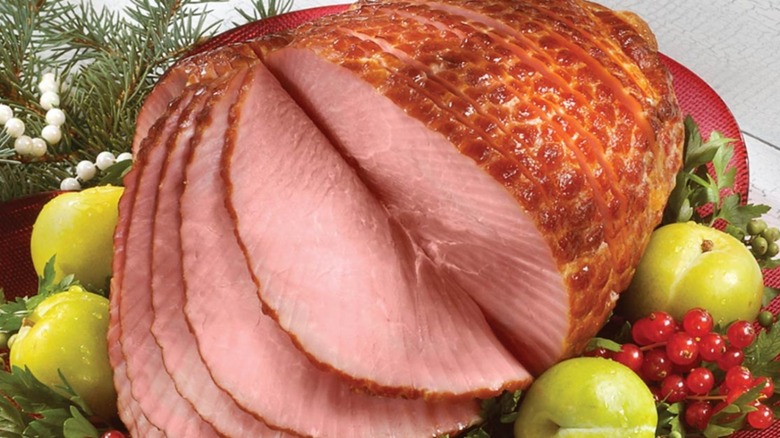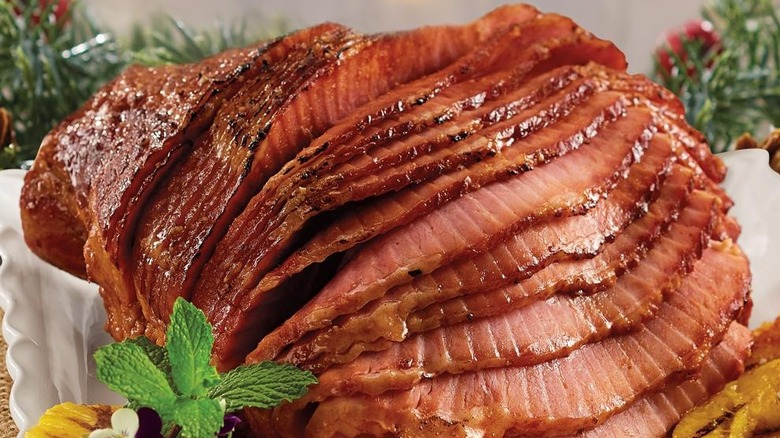Virginia Ham's Claim To Fame Began In Colonial America
Virginia hams are famous in part because they're salt-cured for far longer than most other hams, notes the Smithfield Marketplace. This gives them an added depth and intensity of flavor. However, curing isn't the only part of the ham-making process in Virginia that is distinctive to the state. According to Britannica, Virginia's signature razorback hogs are fed on a regionally specific diet before being cured and smoked.
NPR observes that Virginia hogs are typically fed on foods like peaches and peanuts, a diet that undoubtedly contributes to their renowned sweetness. It may seem like strange nourishment, but like many of the traditions associated with Virginia hams, it goes back a long time. Peanuts, for example, weren't grown on a wide commercial scale in Virginia until just after the Civil War, The House & Home Magazine explains. Once the crop was harvested, hogs in ham-producing counties like Surrey and Isle of Wight were allowed to go nuts, so to speak, on whatever peanuts were left.
The combination of an eclectic flavor-rich diet paired with extended salt curing certainly helped cement Virginia's reputation for quality country hams. In truth, however, that reputation was in place long before the Civil War ended and peanuts proliferated. Virginia's status as a benchmark ham producer actually dates all the way back to the Colonial Era in America.
A short history of Virginia ham
The first hogs came to Virginia when English colonists settled in Jamestown, observes NPR, and early Virginia history is replete with stories of ham makers. George Washington, a founding father and the country's first president, had his own smokehouse. He would sometimes stock the capitol's larder with ham barrels from his Virginia estate.
Smithfield, in Isle of Wight County, would eventually become the most famous ham-producing town in Virginia. Smithfield's commercial ham history began with Captain Mallory Todd, who started selling his hams in 1779, per Recreation News. A little more than 100 years later, by the end of the 19th century, Smithfield was turning out over 20,000 hams annually, per NPR. That volume would only increase by 1936 when the Smithfield Packing Company opened. The company would soon establish itself as the nation's biggest single ham producer. Smithfield became so synonymous with Virginia hams that it acquired the nickname "Hamtown."
According to NPR, Virginia hams in the Colonial Era were produced similarly to the way they are today, Well-fed razorback hogs would be salt-cured for several weeks, and then given a dry rub of brown sugar and black pepper before being moved to the smokehouse. The main difference nowadays is the length of curing time. Some modern Smithfield producers cure their hams for up to nine months, notes Recreation News.

